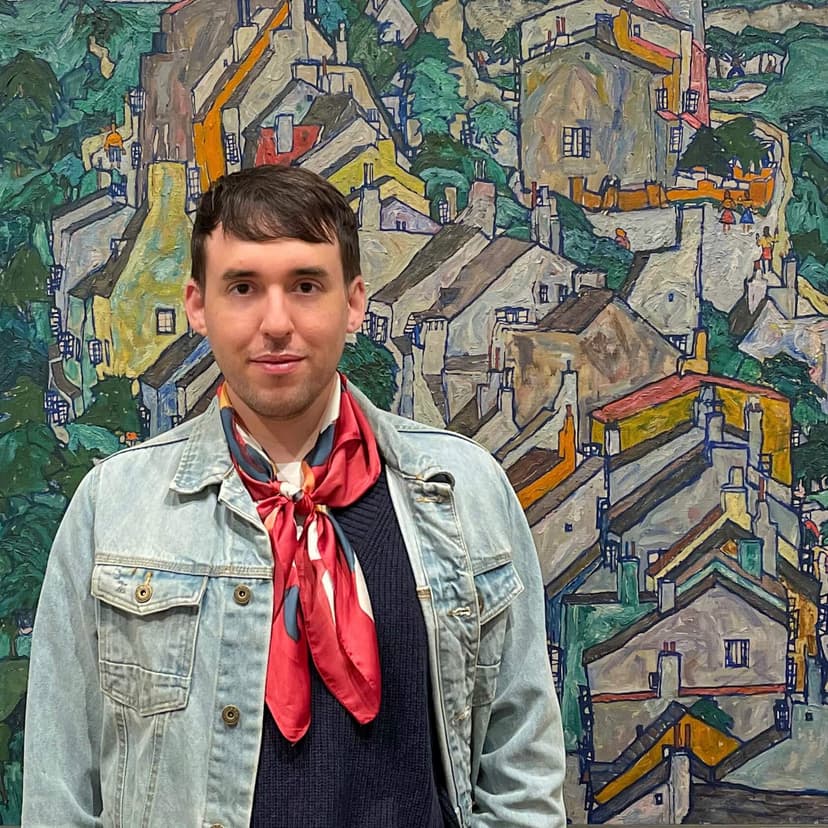Though humble in size, “The Rob Moore Retrospective” at Gallery VERY presents a riveting introduction that spans over twenty years of the artist’s venture into geometric abstraction across media. Primarily highlighting Moore’s austere oil paintings of quadrilaterals and energizing prints of curvilinear shapes, the exhibition invites viewers to revel in the subtle impact of intersecting lines and adjacent planes of color. The artist’s formalism inevitably recalls the more subdued paintings of Abstract Expressionism and also the work of his contemporaries like Frank Stella, Sol LeWitt, and Agnes Martin. “The Rob Moore Retrospective” does not situate Moore within this perhaps obvious milieu. Instead, it is one piece of The Rob Moore Project, which aims to build a robust digital archive of the artist consisting of artworks, documentation, and oral history. Given the discursive focus of the online project, Gallery VERY has pursued the succinct and surprising goal of letting the work speak for itself.
Born in 1937 in Trenton, New Jersey, Rob Moore came to artmaking by way of studying art history. His coursework introduced him to the vocabulary of modernism, which influenced his own grammar of geometric abstraction. After studying painting and printmaking in Cincinnati and Philadelphia, Moore began teaching at the Massachusetts College of Art in 1968 up until his death from AIDS-related illnesses in 1992. Moore was known as a demanding yet impactful teacher—qualities that could also describe his printmaking from the seventies. Of the seven on view at Gallery VERY, four flirt with trompe l’œil and resemble other materials like textile swatches and legal pad paper. These illusionistic references distinguished Moore from the influential orthodoxy of medium specificity that defined mid-century American art, but more interesting is his allusion to the ordinary and unnoticed.
While Moore’s prints draw our attention to subtle geometries of the everyday, his work in painting and sculpture summon more intimate associations. Near the end of his life, Moore constructed a wooden sculpture that mimics the rectangles and squares of his work in oil. Whereas the exquisitely murky Untitled (c. 1987) invites close looking due to the buildup of paint that gives each form a fleshy presence, the sculpture evokes the body through absence. Simplified to planes of wood and negative space, the work slyly evokes queer sexuality through its similarity to a headboard. The gaps between the edges of the sculpture’s internal rectangles show the artist’s interest in horizontality as a compositional element, but in the context of a bed, they also emphasize the prone and supine positions of bodies during sex or sleep. Meanwhile, the hollow box carved out of the farthest left square echoes Josef Albers’s Homage to the Square series, but it also looks like a gloryhole. Reminding us that different interests and desires can simultaneously exist in a contained system, the sculpture is one of Moore’s finest pedagogical acts. Its lessons were desperately needed when AIDS began to decimate life globally, and its lessons are tragically needed now as that crisis and its related stigma live on.
Moore garnered prestige during his career—including a grant from the National Endowment for the Arts in 1975 and acquisition of his work by the Museum of Modern Art and the MFA Boston—but he is less known outside of the Boston area. Although presented as a retrospective, the modest show at Gallery VERY does not conceive of itself as a true overview. As part of The Rob Moore Project, it participates in a larger effort to recuperate Boston’s queer art scenes, with one recent example being the illuminating exhibition “As the World Burns: Queer Photography and Nightlife in Boston” at Tufts University Art Gallery. These exhibitions demonstrate a simple but effective method of preservation: prioritize artists by prioritizing their work.
Gallery VERY may be the best place to encounter Moore’s work because of its proximity to the artist. John Guthrie, an artist and the gallery’s founder, knew Moore during the last two years of his life when their studios were adjacent to each other’s at 59 Wareham Street in Boston’s South End. Guthrie still uses that studio, part of which has been converted into Gallery VERY. Thus, several of Moore’s pieces essentially hang on the same brick wall he once worked on. While this auratic detail doesn’t influence the already magnificent quality of the artist’s work, it certainly matters overall to The Rob Moore Project. Like the precise linear structures of his prints, paintings, and sculptures, every detail counts.
Community members are invited to share memories and stories about Rob Moore and his work by contacting therobmooreproject@gmail.com.




